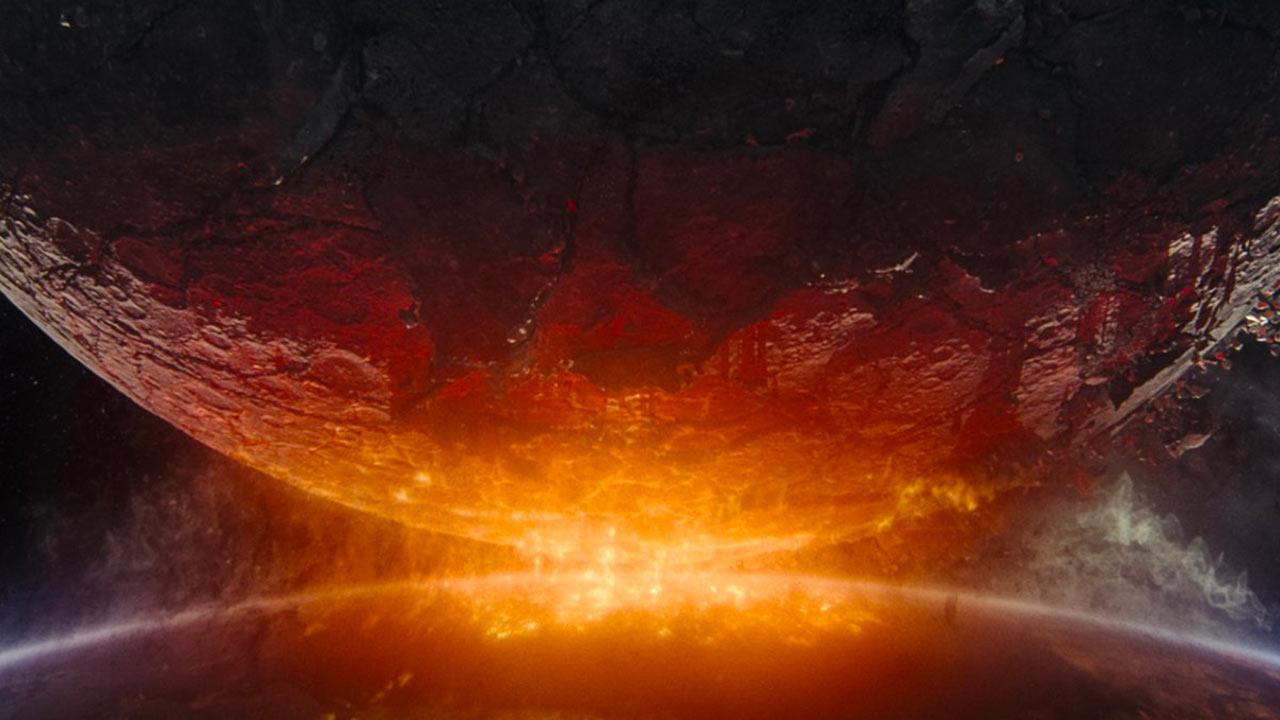Our engineers change the ending of Moonfall
10.03.2022

What would happen if the Moon was on a collision course with Earth? After The Last Voyage, our movie-loving engineers have tweaked the scenario of Moonfall, a movie by Roland Emmerich (spoiler alert).
Renowned for his penchant for spectacular events, Emmerich’s movies always have a straightforward plot. This time, a mysterious force knocks the Moon from its orbit and sends it racing towards Earth. Humankind has three weeks to avert impact and prevent the annihilation of life on the planet. Three unlikely heroes will attempt an impossible mission in space… and will discover the Moon’s hidden secrets.
The recipe for this type of movie is simple: grandiose visual elements. The more the better. Audiences who love big-budget special effects won’t be disappointed. The cinematographic child of 2012 and Independence Day, Moonfall guarantees spine-tingling entertainment. Science, however, takes the backseat in this imaginary story. And that’s just fine!
First of all, ArianeGroup engineers are intent on reassuring us. The laws of physics are indisputable: the Moon will remain our satellite for the next 14 billion years. This takes into account the fact that the lunar orb is moving away from Earth at a rate of 3.8 centimeters per year.
Learn about other aspects that will put your mind at ease concerning the probability of a collision with the Moon: the French space agency CNES has published an article on the subject and a video on the Kurzgesagt YouTube channel shows a detailed scenario.
That, however, is what is happening (beware of spoilers), in Emmerich’s film. As the Moon is hurtling towards Earth, the crew collectively finds a way to launch a retired space shuttle to counter the menace. ArianeGroup engineers have a lot to say in this regard, not to mention the mere few weeks it took to prepare the flight.
It is important to remember that launch vehicles are extremely complex craft. It takes no less than 40 highly experienced engineers to coordinate an Ariane 5 launch in the Jupiter control room at the European spaceport in Kourou, French Guiana. Dozens of technicians at the launch base follow a chronological procedure, and operate the launcher. Not to mention the hundreds of others who work on systems handling, spacecraft and payload integration, transport to launch pad, and fuelling.
Does the film’s fictional scenario still make you anxious? This should put your mind at ease. In the movie, the Moon is discovered to be a gigantic and hollow megastructure that contains a star (you will need to watch the film to find out why!). Its internal structure is made up of mirrors and solar panels that draw energy from its captured star.
The existence, however, of such a structure is extremely unlikely. Our engineers are unequivocal about that. Its material would need to be resistant enough to prevent the extraordinarily sized sphere from disintegrating. No known material is even close. Another problem: the sphere would not be able to exert a stable gravitational pull on its star.
You can rest easy. Our engineers are watching over us. Although the Moon has yet to reveal all its mysteries, it nonetheless remains our gentle neighbour. Read the following articles to find out more about the Moon:
- There are good reasons for going back to the Moon 50 years after Apollo 11
- ArianeGroup to study a Moon mission for ESA
- ArianeGroup inspires ‘space-struck’ kids
- ArianeGroup to deliver key propulsion system components for the Artemis III moon mission
- ispace Europe and ArianeGroup and ESA assess commercial partnership for lunar transportation services